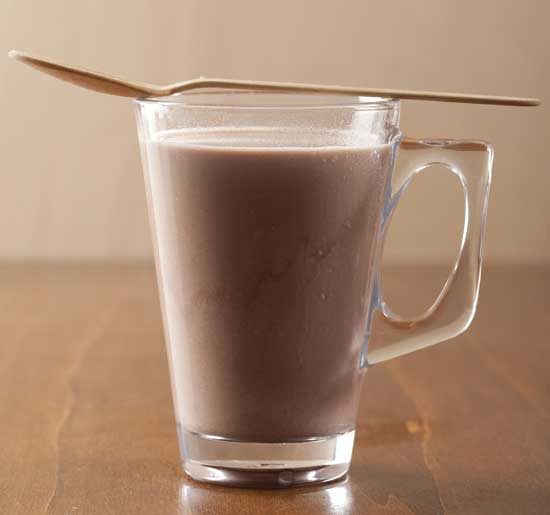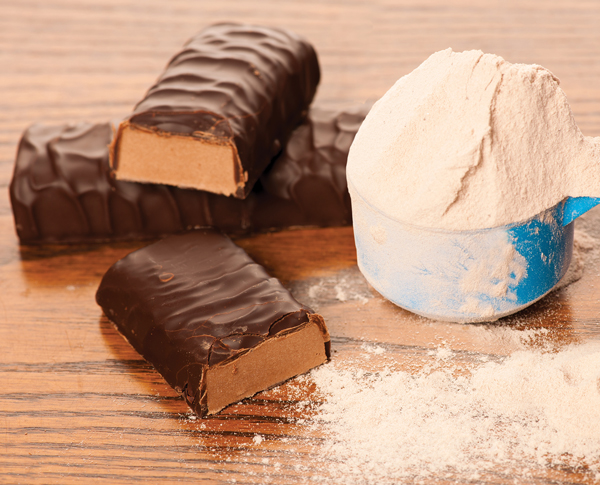Plant Proteins Take Root
NUTRACEUTICALS
It has been interesting to watch the protein market evolve through the past several years. Protein ingredients, in general, began to surge when research placed an emphasis on consuming adequate amounts of lean protein throughout the day. As the benefits of protein, including weight management, satiety, heart health, and muscle maintenance, became more publicized, the interest in protein also increased. Now, with the growing interest in plant-based foods and diets, the protein market has taken another turn toward plant-based proteins. According to the Plant Based Foods Association, plant-based food sales are topping $3.3 billion and dollar sales growth is 20% over the past year (Plant Based Foods Association 2018). The plant-based milk category is up 9% and comprises about half the total dollar volume, at $1.6 billion. Sales of plant-based meats increased by 24%, topping $670 million in sales.
“We’re seeing significant growth of plant proteins in both the dairy and dairy alternative segments. Dairy is naturally high in protein, but there is plenty of interest in making it even higher—while also getting similar functional benefits that dairy proteins deliver,” observes Christine Addington, senior dairy technical service specialist at Cargill. “Going well beyond standard dairy beverages and yogurt, plant proteins are being formulated into ice cream, processed cheese, and more.”
Clean and simple, familiar, natural, and sustainable are consumer-desired ingredient traits that have fueled the interest in plant-based foods and plant-based proteins. In addition, vegetarian, vegan, and flexitarian diets that promote more plant-based eating are also on the rise. “There is growing evidence supporting that plant-centric diets support human health and health of the environment, and this evidence is starting to shape consumer perception,” observes Michelle Braun, global protein scientific affairs lead at DuPont Nutrition & Health. “A 2017 study on plant-based eating published by Health Focus International noted that the primary consumer drivers for incorporating more plant-based foods into their diets centered on their perceptions that plant-based foods were associated with both short- and longer-term health benefits, as well as social and environmental benefits.”
 Alison Raban, ingredient application scientist at BI Nutraceuticals, explains that her company groups most protein ingredients into two distinct categories: whole food sources that contribute protein and concentrated protein powders. “In both of these categories, plant proteins are gaining a lot of consumer interest. Looking at whole food sources, the most popular are chia and quinoa seeds since both provide plant-based protein, along with other nutrients like consumer-friendly fiber or omega-3s. Other whole food sources of protein outside BI’s ingredient portfolio include ingredients like nuts and seeds,” she explains. “On the concentrate side, pumpkin seed and faba bean protein powders are some of the most popular with our customers. We also just recently started offering lentil protein, which we see as a popular plant-based source of protein. In addition, pea protein seems popular right now, particularly in finished products.”
Alison Raban, ingredient application scientist at BI Nutraceuticals, explains that her company groups most protein ingredients into two distinct categories: whole food sources that contribute protein and concentrated protein powders. “In both of these categories, plant proteins are gaining a lot of consumer interest. Looking at whole food sources, the most popular are chia and quinoa seeds since both provide plant-based protein, along with other nutrients like consumer-friendly fiber or omega-3s. Other whole food sources of protein outside BI’s ingredient portfolio include ingredients like nuts and seeds,” she explains. “On the concentrate side, pumpkin seed and faba bean protein powders are some of the most popular with our customers. We also just recently started offering lentil protein, which we see as a popular plant-based source of protein. In addition, pea protein seems popular right now, particularly in finished products.”
Here is a look at some of these plant-based protein ingredients and other emerging plant-based protein options.
Soy Protein
“Soy is one of the most important foods and ingredients in today’s food landscape and delivers above and beyond any other source of plant-based protein,” says Mark Rainey, chief marketing officer at ADM. “Proteins are frequently measured on a scale known as PDCAAS (Protein Digestibility Corrected Amino Acid Score), which takes into consideration the essential amino acid profile compared to their needed intake levels and digestibility of a protein. Taken together, soy protein’s PDCAAS score ranges from 0.90–0.99 (out of 1.0) depending on its form (flour, concentrate, or isolate), making it one of the most nutritious plant proteins with a PDCAAS score of 0.9 or greater that few other plant proteins have,” he explains.
In terms of sustainability, Rainey notes that soy can be sustainably farmed by using far fewer natural resources and less water and by using agricultural technologies that deliver more yield per acre with reduced carbon emissions. “As the global demand and need for plant-based proteins rise, soy is uniquely positioned to deliver on a mass scale because there are currently enough crops, and it is highly adaptable to be grown in changing climates and agricultural environments. When it comes to the most sustainable, available, and adaptable plant-based proteins, soy is uniquely positioned to take us into the future.”
Research continues to demonstrate soy protein’s benefits, beyond heart health. Speaker et al. (2018) showed that incorporating soy protein into a high-protein, energy-restricted diet led to significant loss of body fat. The researchers evaluated the effectiveness of incorporating soy protein–based foods into a high-protein, energy-restricted diet for weight loss, compared to other sources of protein, in adults with overweight and obesity. The results showed that the subjects who consumed a high-protein, energy-restricted diet, including foods made from soy protein, lost significant amounts of body weight. Furthermore, the majority of the weight lost was fat mass.
“The findings of this study support the formulation of products for weight loss and weight maintenance with the lean, high-quality source of protein, soy,” says Braun. “Whether formulated and positioned as a meal replacement, snack, or center of plate food, this study demonstrates the efficacy of soy-containing products.” Food scientists at DuPont Nutrition & Health developed a dry-blended beverage, a meat-free, lean soy sausage, and a nutrition bar for the study. The samples contained 20 g of lean, high-quality SUPRO soy protein per serving.
 Almond Protein
Almond Protein
Blue Diamond Global Ingredients Division in July introduced Blue Diamond Almond Protein Powder, which offers 40%–45% protein and the nutrition of whole almonds. “The ingredient adds fiber to formulations and is saturated fat- and cholesterol-free, supporting good heart health. Additionally, Blue Diamond Almond Protein Powder serves as an excellent source of magnesium, phosphorous, manganese, and copper and is a good source of potassium, calcium, zinc, and iron,” says Jeff Smith, director of marketing at Blue Diamond Almonds Global Ingredients Division.
Blue Diamond Almond Protein Powder is easy to blend due to its fine texture and has a clean taste and mild flavor that does not require masking. The ingredient works well with a range of products such as fitness supplements, high-protein nutrition bars, breakfast cereals, smoothies, shakes, and more. The ingredient’s smooth texture and clean, subtle flavor give it potential for use in the ready-to-drink beverage category, adds Smith.
Pea Protein
Pea protein has been used in sports nutrition products because it contains lysine, arginine, and branched chain amino acids, which have been shown to be important for muscle maintenance. In addition, pea protein is considered nonallergenic, gluten-free, and eco-friendlier to grow than animal sources of protein. In addition, as peas grow, nitrogen is put back into the soil, often reducing the need for fertilizer.
“While pea protein contains all the essential amino acids, it is not considered a complete protein because two of the amino acids, methionine and cysteine, are present at less than 25 mg/1g crude protein,” explains Melissa Machen, senior technical services specialist—plant protein at Cargill. “However, formulators can blend pea protein with a complementary plant protein source like rice, chickpea, soy, or pumpkin to achieve a higher score. Rice is a common option as it has higher levels of methionine and cysteine to complement the lower levels in pea protein. Blend the two ingredients together in the right ratio and formulators can take advantage of the functional benefits of pea protein, yet still make complete protein claims.”
Last year, Cargill signed a joint venture with PURIS, a North American producer of pea protein, to accelerate a new wave of great-tasting, sustainable, and label-friendly plant-based foods. “Taste is an area we’re always cognizant of, and a key driver behind our partnership with PURIS,” notes Addington. “While most pea proteins bring along a host of flavor issues, PURIS Pea Protein is decidedly different. It’s sourced from non-GMO yellow pea seed varieties specially selected to minimize the off-flavors normally attributed to pulses. In addition, it’s processed without the use of hexanes to bring out the best flavor possible.”
Roquette is investing in its pea protein business by constructing a pea protein manufacturing site in Manitoba, Canada. This large industrial complex will expand Roquette’s pea protein production capacity and will help address the growing customer demand for plant-based proteins in North America and globally. The production of pea protein ingredients is expected to begin in 2019.
ADM is also building its own pea protein processing plant in North Dakota and is signing contracts with farmers to buy and grow yellow peas.
Rice Protein
The benefits of rice protein include hypoallergenicity, easy digestibility, and high amounts cysteine and methionine. Axiom Foods specializes in the development of different rice protein ingredients, which vary in protein percentage, mesh/particle size, and functionality capabilities. Oryzatein is the trade name for its whole grain brown rice protein; it is available in 80% and 90% protein levels. The company also offers Vegotein pea protein, which has a complementary amino acid profile and can be blended with Oryzatein.
Kalman et al. (2018) found no significant advantage to body composition when adding 75 g/day of either rice protein isolate (Oryzatein) or whey protein isolate to the diet of elite-level mixed martial artists undergoing their typical high-volume, high-intensity training regimen. There also did not seem to be a negative impact of ingesting an extra 300 kcal/day in these athletes, as no changes in body weight and composition were noted. Both the rice protein isolates and whey protein isolates appeared to support body composition similarly without differences or negative impacts on the athletes. The company points out on its website (axiomfoods.com/clinical-trials/) that Oryzatein rice protein may be substituted for whey protein 1:1 in products formulated to help build or maintain muscle mass.
 Water Lentils
Water Lentils
Protein derived from water lentils (Lemnaceae) is similar to animal protein. LENTEIN from Parabel USA contains levels of essential amino acids and BCAA’s comparable to whey, higher than other plant proteins including soy, and has a PDCAAS of 0.93. The ingredient contains other macro and micro nutrients, notably omega-3 fatty acids, lutein, and dietary fibers, and is free of food allergens. Parabel in August announced that the U.S. Food and Drug Administration issued a GRAS No Objection Letter for LENTEIN. The FDA also noted that LENTEIN could be considered as a color additive in applications, which requires that the company file a petition. LENTEIN imparts a vibrant green color to food products and keeps its color through different temperatures.
Emerging Plant-Based Proteins
“Looking forward, it’s hard to guess what will be the next new hot protein, but it seems pulses are a great starting place since they are generally fairly high in protein,” says Raban. Some examples of trending pulses are chickpeas, navy beans, and mung beans. Ancient grains such as chia, quinoa, teff, millet, amaranth, and sorghum are also emerging plant-based protein sources, she says. “Some trends a little more outside the box are algae and insect sources for protein, but those seem to still be a few years off from full consumer acceptance.”
At IFT18, The Lupin Co. showcased lupin protein ingredients. The legumes, which are grown in Australia, are gluten-free and contain 40% protein, 37% dietary fiber, and 4% carbohydrate. Lupins contain approximately 6%–7% fat with 81% being unsaturated and have beneficial omega-3 fatty acids. They are high in antioxidants (lutein, zeaxanthin, and beta-carotene), which contribute to lupin’s distinctive yellow color.
Axiom also offers other emerging plant-based protein ingredients, including sacha inchi protein powder and organic Cannatein Plus Hemp Protein. Made from hempseed, hemp protein is easy to digest and is relatively high in L-tyrosine and arginine.
Nature’s Power Nutraceuticals (NP Nutra) in February launched Organic Plant-based NutraProtein Power Blend, a specially formulated nutritional mix of plant-based proteins, essential amino acids, and other nutrients that has a protein content of more than 55%. NutraProtein Power Blend comes in two flavors and is more than 95% certified organic. The Greens formula contains pea protein powder, sacha inchi protein powder, brown rice protein, and hemp protein powder. The Chocolate formula contains pea protein powder, sacha inchi protein powder, and brown rice protein.
Naturex and MycoTechnology in September 2017 signed a global distribution agreement for PureTaste shiitake mushroom plant protein. MycoTechnology’s patent-pending fungi fermentation technology delivers a sustainable protein with all nine essential and 11 nonessential amino acids. PureTaste is also a highly digestible protein. The unique process to make PureTaste takes advantage of vertical space, using large fermentation vessels that recapture energy and water to maximize sustainability.
Next month’s Nutraceuticals section will showcase information about fruits, nuts, and grains.
 Linda Milo Ohr,
Linda Milo Ohr,
Contributing Editor
Denver, Colo.
[email protected]
References
Kalman, D., A. Escalante, S. J. Hewlings, and D. S. Willoughby. 2018. “The Body Composition Effects of Extra Protein in Elite Mixed Martial Artists Undergoing Frequent Training Over a Six-Week Period.” EC Nutrition 13(6).
Plant Based Foods Association. 2018. “Plant Based Food Sales Grow 20 Percent.” Press release, July 30. Plant Based Foods Association, San Francisco. plantbasedfoods.org.
Speaker, K. J., R. D. Sayer, J. C. Peters, et al. 2018. “Effects of Consuming a High-protein Diet With or Without Soy Protein During Weight Loss and Maintenance: A Non-inferiority, Randomized Clinical Efficacy Trial.” Obesity Science & Practice 4(4): 357–366.


